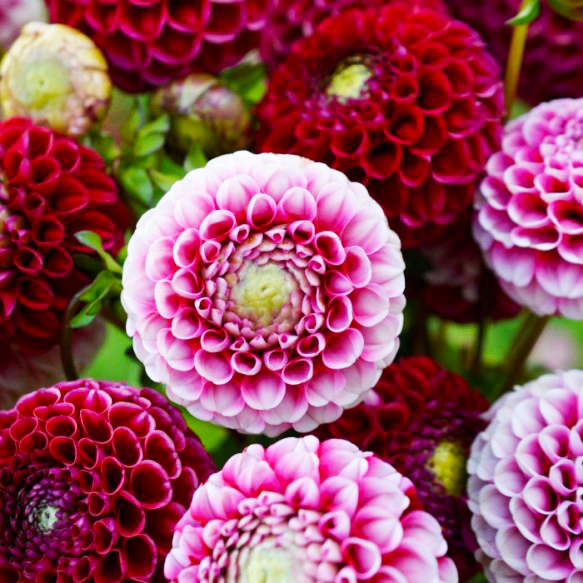Dahlia Dividing Observations In 2021, we established an experimental 10-Bed Unit (10BU) at TJC complementing the ongoing research on this topic at VGFP and other 10-BU locations globally. The diet design for this experimental bed included dahlias as a versatile carbon/calorie/income crop. You can find a good intro to edible dahlias here. Hello and welcome to part three of our five-part dahlia learning series. In this article I will evaluate how the varieties have preformed this year, what I have learned about the process, and how I plan to improve the storage process this year!
Last year I stored the tubers in cardboard boxes in our storage cellar. I checked on them regularly and sprayed them with water when I felt they were getting too dry. I don’t think this worked very well because most of them still dried out and some even developed mold. I believe the storage method lacked consistency and provided to much variation in humidity over time. This year, I plan to store the tubers in sealed plastic bags filled with coco coir. Coco coir is dried chipped fiber from the outer husk of the coconut and can be ordered easily from most garden amendment suppliers. However, you could substitute wood chips, sawdust, and possibly even newspaper (provided it was printed with non-toxic ink). I believe anything natural to your area that is dry and can hold moisture would also work, possibly even dried grass clippings. I think it would be important to make sure the substrate you use is fairly dry as too much moisture in the bag could cause mold to develop. I would avoid using peat moss, though, as peat wetlands absorb and store carbon dioxide from the atmosphere (peat holds more carbon than the combined forests of Britain, France, and Germany!), purify the water that flows through them, and are delicate ecosystems that take thousands of years to build up. Commercial harvesting of peat destroys these wetlands and releases a lot of CO2 into the atmosphere. There are plenty of other options, so don't use peat. Thank you for reading this season’s Dahlia Dividing Observations, I hope they have helped you learn some now things about dahlias with me, and I look forward to bringing you all the next report in the spring. ♥ top | Newsletter Home |Table of Contents| Archive
|


 This year we grew ten dahlia varieties: Thomas Edison,
Mikayla Miranda, My Hero, Maki, Who Me?,
Chick A Dee, Hometown Hero, Citron Du Cap, Giggles,
and Patches. My first observation, now that the
summer is over is that I think all the dahlias were a
bit stunted due to being started in flats; I don’t think
they liked being transplanted. Next year I will plant
the tubers directly in the ground to test this theory.
The varieties that produced the largest blossoms
were My Hero, Maki, Citron Du Cap, and Thomas
Edison. These varieties also produced a good amount
of biomass and I suspect that they will have large
bulbs, but that is something to be confirmed when I
dig them up – I’ll let you know how it turned out in
the next article in this series. Who me? and Home-town Hero, Patches, and Mikayla Miranda were all
more in the medium range on bloom size and biomass
production. Chick A Dee and Giggles both produced
smaller blooms and little biomass, but they
produced cute and beautiful flowers that brought
everyone in the garden joy, so they had value, too.
This year we grew ten dahlia varieties: Thomas Edison,
Mikayla Miranda, My Hero, Maki, Who Me?,
Chick A Dee, Hometown Hero, Citron Du Cap, Giggles,
and Patches. My first observation, now that the
summer is over is that I think all the dahlias were a
bit stunted due to being started in flats; I don’t think
they liked being transplanted. Next year I will plant
the tubers directly in the ground to test this theory.
The varieties that produced the largest blossoms
were My Hero, Maki, Citron Du Cap, and Thomas
Edison. These varieties also produced a good amount
of biomass and I suspect that they will have large
bulbs, but that is something to be confirmed when I
dig them up – I’ll let you know how it turned out in
the next article in this series. Who me? and Home-town Hero, Patches, and Mikayla Miranda were all
more in the medium range on bloom size and biomass
production. Chick A Dee and Giggles both produced
smaller blooms and little biomass, but they
produced cute and beautiful flowers that brought
everyone in the garden joy, so they had value, too. 